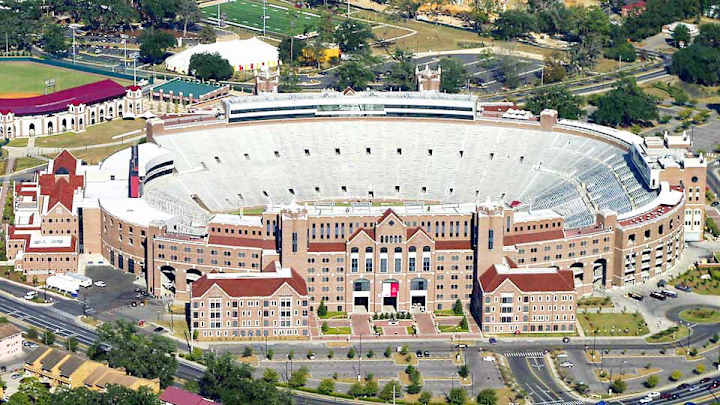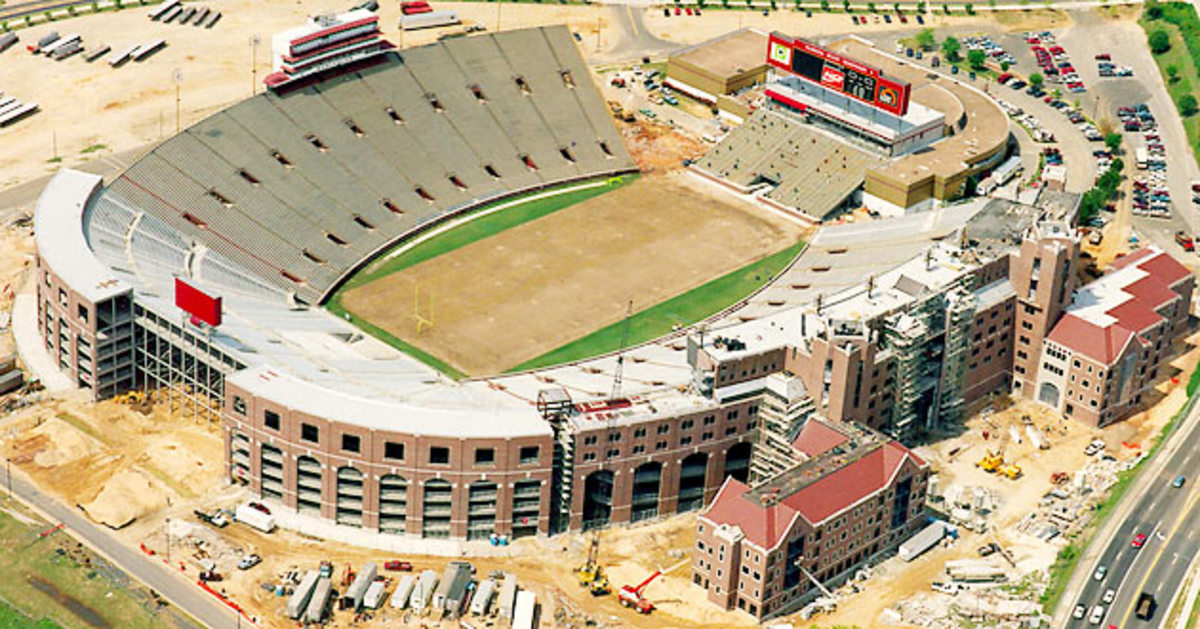Stadium Spotlight: Rebuilding Doak Campbell brick by 3 million bricks

From glorified erector set to massive brick structure, Doak Campbell Stadium underwent an overhaul in the 1990s that completely changed the gameday experience.
Originally constructed in 1950, Doak Campbell opened with a capacity of 15,000. Over the decades, the stadium grew and eventually towering steel supports sat fully exposed on the backside of the 54,000-seat Tallahassee venue. That all changed for Florida State when the school completely enclosed both the steel and the seating, adding academic buildings and a complete façade with over 3 million red bricks, turning Doak Campbell into an 83,000-plus-seat stadium and one of the largest continuous brick buildings in the nation.
“It completely changed the look of the stadium,” architect David Fronczak of Barnett Fronczak Barlowe Architects and renovation designer, tells SI.com. “It was a steel skeleton building and the desire was to capture the collegiate gothic look of the rest of Florida State University, but doing it in somewhat a cotemporary manner.”
• STAFF: Week 8 picks: Will Notre Dame upset Florida State?; more
Not only did the three million bricks completely enclose the steel, it also allowed FSU to connect the single-level bowl seating all the way around and boost capacity to make Doak Campbell the largest stadium in the ACC.
To give purpose to the brick, Fronczak designed academic buildings into the structure -- similar to what Notre Dame has planned for its renovation -- tying in classroom space and a new north-end six-story athletic building. The new building allowed Florida State to locate the entire athletic department in one place, with a 150-seat auditorium, a stained-glass mural and a grand entry that includes space for memorabilia.
• NEWCOMB: Notre Dame Stadium returns to its history
Having academic buildings rise multiple stories also made it easy to situate new luxury stadium seating to the higher reaches of Doak Campbell. And all the way at the top of the stadium sits a near-continuous rim of plazas, terraces and boxes that can push standing-room capacity to nearly 84,500.
Franczak says allowing boosters to buy rooftop tickets gives Florida State a pro-style stadium with a variety of experiences.

What was the backside of the stadium turned into the front of the academic buildings, allowing the connection between the steel and the brick to welcome upgrades to amenities. Whereas groups such as the Boy Scouts once nobly served concessions, the new space made way for professional-style concessions and upgraded restroom facilities, Fornczak says. “Almost everything around the stadium is brand new.”
• STAPLES: Golson's ball security key to Notre Dame's upset hopes
Each of the end zones underwent massive changes, with the north end zone holding upgraded videoboard technology and the athletic building and the south end zone boasting a restaurant and sports grill on the top floor with views of the natural grass Bobby Bowden Field.
In addition to nearly everything outside the seating bowl getting redone, the inside saw a shift too. The existing steel stadium and ramps remained, but filling in the entire bowl bumped capacity nearly 30,000 and fully enclosing the fans trapped crowd noise. New videoboards, graphics and repainted steel refurbished the appearance.
“They’ve upgraded the stadium so much, the gameday experience is so much different now that it is all enclosed,” Fronczak says. “I think the whole atmosphere has changed because there are so many more people. It is really energized.”
All it took to a boost of energy to Doak Campbell was a winning football team, 30,000 more seats and over 3 million bricks.
Tim Newcomb covers stadiums, design and gear for Sports Illustrated. Follow him on Twitter at @tdnewcomb.
• RICKMAN: Your Perfect Saturday: TV guide to ultimate Week 8
